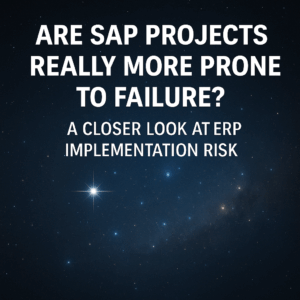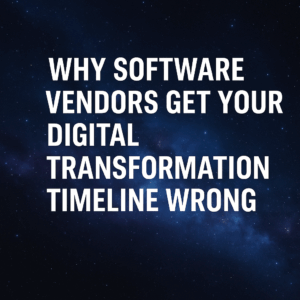When considering the transition to cloud computing for your enterprise software deployments, it is crucial to understand the strengths, weaknesses, pros, cons, and risks associated with cloud migration. In this discussion, we will delve into these aspects.
![How to Migrate to the Cloud [Best Cloud Migration Strategies] 1 YouTube player](https://i.ytimg.com/vi/KwUGud5JxGw/maxresdefault.jpg)
When working with clients, the majority of them are considering, and many are deciding to move to the cloud. While this is the general direction the industry is heading in terms of product development and market trends, there are risks, downsides, and pitfalls associated with cloud migration that organizations need to be aware of.
Many organizations are not familiar with these risks and pitfalls. However, the reason why so many organizations are moving to the cloud is due to the numerous benefits it offers. Firstly, software vendors are heavily investing in research and development for cloud-based solutions, making them more advanced and cutting-edge over time. Secondly, from a technical perspective, deploying technology becomes easier as there is no need to manage infrastructure or internal software maintenance with cloud solutions.
These are just a couple of examples of the strengths of cloud computing. However, alongside these strengths, there are also weaknesses and risks that did not exist before the advent of cloud computing. In today’s discussion, I will address the pitfalls and risks associated with cloud migrations and share strategies that we have found to be most effective for organizations as part of their cloud migration plans.
Table of Contents
ToggleLift and Shift vs Transformation
One of the significant weaknesses we commonly observe in cloud deployments is not related to any inherent flaws in the cloud solutions themselves, but rather the lack of organizational adoption and utilization of the capabilities offered by cloud solutions. In other words, many organizations rush into the cloud without fully leveraging the potential advantages that cloud offerings can provide.
Cloud solutions encompass a wide range of advanced technologies, such as machine learning, artificial intelligence, robotic process automation, and Internet of Things integration. These capabilities can truly be game-changers for your business model. Given the substantial investments made by software vendors in cloud solutions, it is crucial to focus on and comprehend your objectives for the cloud migration.
If you are simply seeking a “lift and shift” approach, where you migrate your existing system to the cloud using the same functionalities you had before, that is acceptable. However, it is essential to consider the cost associated with this approach because the real benefits arise from the new capabilities provided by cloud offerings. If you aim for a genuine digital transformation, wherein you go beyond automating existing processes and undertake more advanced business models and technical capabilities, your strategy and plan need to reflect that objective.
Hence, the initial key step is to understand the distinction between an incremental lift and shift approach and a transformative digital transformation. It is crucial to ensure that your overall cloud migration strategy aligns with your chosen approach.
Business Intelligence and Analytics
One of the significant advantages of cloud systems today is the enhanced business intelligence (BI) and analytics they offer. This is primarily due to the centralization of data and applications in the cloud, which often simplifies data access and consolidation. However, many organizations fail to capitalize on these analytical and BI capabilities. One reason for this is the absence of a clear vision regarding the desired outcomes from their cloud system in terms of BI, analytics, reporting, and more.
Therefore, as part of your cloud migration strategy, it is crucial to establish a well-defined vision from the outset. Determine what you hope to achieve and expect in terms of BI, reporting, analytical capabilities, and other relevant areas as a result of your cloud migration.
![How to Migrate to the Cloud [Best Cloud Migration Strategies] 2 YouTube player](https://i.ytimg.com/vi/Ty29yfcMsuQ/maxresdefault.jpg)
Integration and Architecture
Just as BI and analytics are core capabilities of cloud systems that many organizations fail to fully leverage, the same is true for architecture and integration. Many of today’s cloud systems are designed to serve as platforms for seamless integration with other systems. If you have legacy systems that will remain on-premise or if you are required to continue using regulatory systems, these present excellent opportunities to utilize the cloud for integrating core cloud technologies with other systems.
Therefore, it is critical to have a clear vision, understanding, strategy, and plan for effectively transferring data to your cloud system and ensuring proper integration among different systems. This is essential for the success of your cloud migration. Additionally, if you genuinely want to harness the potential of machine learning, AI, and other advanced capabilities offered by cloud systems, it is imperative to establish integration and data access. These cutting-edge technologies heavily rely on quality data and seamless integration with other systems.
When formulating your cloud migration strategy, it is essential to consider these factors and acknowledge that integrating data and other systems may require additional time, potentially increasing costs and extending the timeframe. However, doing so will enable you to fully exploit the advanced capabilities provided by cloud systems.
Change Management
Change management is a critical component of any digital transformation, but it becomes even more crucial when it comes to cloud migrations. While some argue that change management is easier with cloud systems due to their user-friendly interfaces and better user experience, the advantages from a change management perspective are outweighed by the challenges of cloud migration.
Let me provide an example of how cloud technologies have a significant impact on people and highlight the need for change management. Generally speaking, cloud solutions offer less flexibility compared to on-premise systems. With on-premise systems, you could customize and configure them according to your specific requirements because you own the software. However, with cloud systems, especially multi-tenant SaaS (Software-as-a-Service) solutions, you don’t necessarily own the software as it is hosted in the cloud. As a result, cloud solutions are typically less flexible, putting more pressure on changing people and processes rather than the technology itself.
This is perhaps the primary reason why change management is highly emphasized in cloud migrations. It’s important to resist the misconception that cloud systems are easier to manage from a change management perspective. In reality, it can be more challenging for many organizations to adopt these new systems due to the reasons mentioned above. Therefore, it is crucial to have a clear and effective organizational change strategy that addresses resistance to change and the organizational challenges that may arise during the migration.
![How to Migrate to the Cloud [Best Cloud Migration Strategies] 3 YouTube player](https://i.ytimg.com/vi/-2jduJ22C5c/maxresdefault.jpg)
Cost Optimization
Perhaps one of the least discussed aspects in cloud migrations is the fact that, in general, cloud solutions will end up costing more in the long run. Many organizations, particularly software vendors, may argue against this notion, claiming that cloud systems save money by eliminating infrastructure and software maintenance costs. While it’s true that some savings can be achieved in these areas, the overall cost of cloud solutions tends to outweigh the savings. This becomes especially apparent when looking at the long-term perspective, typically five to seven years down the line.
During the first two or three years, there may indeed be cost savings, as your annual operating expenses decrease and you avoid large upfront capital investments associated with on-premise systems. However, similar to leasing a car, you will eventually realize that ongoing costs, which continue indefinitely, gradually escalate and surpass the initial savings. This presents a significant risk in cloud migrations.
To mitigate this risk, it is crucial to incorporate a thorough negotiation strategy. Gain a comprehensive understanding of the total cost of ownership, and identify any hidden cost escalators and contract provisions. Software vendors, in my opinion, hold a stronger position due to their ownership of your data and applications. Consequently, long-term contracts often contain provisions for increasing costs over time. It is important to note that costs are unlikely to decrease; if anything, they are more likely to rise, often by a substantial percentage. As your organization grows, increases its data volume, adds users, and incorporates additional modules, costs will naturally increase.
Awareness, negotiation, and early planning for these cost considerations should be an integral part of your digital transformation strategy.
Managed Services
The final consideration for your cloud digital transformation is understanding the managed services environment and negotiating the best possible arrangement. This goes beyond costs and encompasses important aspects such as service level agreements, performance guarantees, uptime commitments, and cybersecurity protocols. When you outsource and pay for managed services, it is crucial to ensure that you achieve the expected results. This is the essence of the managed services model provided by cloud providers.
Migrating your applications to the cloud involves more than just transferring software. You now have an external party responsible for managing your infrastructure, cybersecurity, and data. It is essential to establish clear parameters, key performance indicators (KPIs), and service level agreements with your service provider. Holding them accountable for delivering the expected improvements over your current on-premise infrastructure is vital.
These are some factors to consider as you develop your cloud migration strategy.
I would enjoy brainstorming ideas with you if you are looking to strategize an upcoming transformation or are looking at selecting an ERP system, so please feel free to contact me at eric.kimberling@thirdstage-consulting.com. I am happy to be a sounding board as you continue your digital transformation journey.




